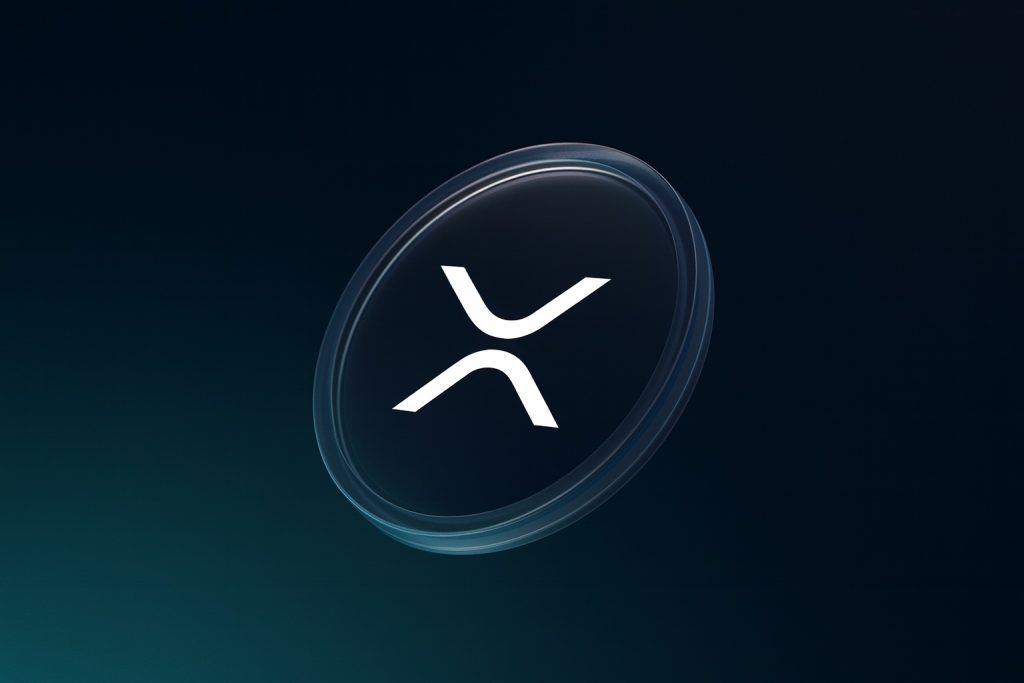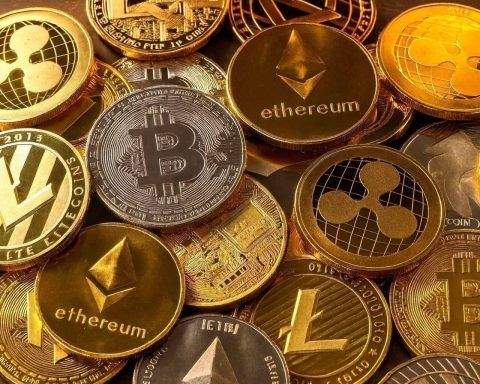Summary of Key Facts: As of October 12, 2025, Ethereum (ETH) trades around $3,800 (about €3,500) after a violent sell-off. ETH is down roughly 15–16% over the past week and ~14% in the last month [1]. This swing followed a geopolitical shock: President Trump’s announcement of massive new China tariffs on Oct. 10–11 triggered a “crypto carnage,” sending ETH ~7% lower (below $4,100) on Oct. 10 [2]. Over $600 million in leveraged crypto positions were liquidated that day, including $235M of ETH longs [3]. Earlier in early October, ETH had spiked to ~ $4,750 during a broad “Uptober” rally as institutions poured into crypto – for example, spot ETH ETFs saw ~$1.5 billion inflows in the first week of October [4]. On-chain indicators remain bullish: exchange reserves of ETH are near nine-year lows [5], and decentralized-exchange (DEX) volume recently jumped ~47% [6], reflecting robust activity. Market sentiment is cautiously optimistic: on a popular prediction market ~80% of bets now say ETH will hit $5,000 before dropping to $3,500 [7]. Experts remain divided on targets – for example, Fundstrat’s Mark Newton sees $5,500 by mid-October [8], while Standard Chartered’s team forecasts ~$7,500 by end-2025 [9], even as Citigroup offers a more conservative $4,300 by year-end [10].
Ethereum Today: Price & Performance
- Current Price: About $3,800 (24h), after recovering from last week’s lows. CoinGecko shows ETH at ~$3,821 [11], while Binance data (via Twelvedata) lists $3,819.69 (up ~2% on Oct. 12) [12].
- Recent Change: ETH has fallen roughly 15–16% in the past 7 days and ~14% over 30 days [13]. For context, ETH hit a fresh all-time high (~$4,946) in late August 2025, then plunged in September back below $4,000 [14]. A bounce in early October pushed ETH above $4,500, but the tariff news on Oct. 10 saw it drop under $4,000 (as low as ~$3,500 on some exchanges [15]). As of Oct. 12 midday, ETH is trading mid-$3,800s [16] [17].
- Performance Metrics: YCharts confirms ETH at $3,749.22 on Oct. 12 (UTC), down from $4,487 a week earlier [18] (≈–16.5%). Year-over-year (Oct 2024 vs Oct 2025), ETH is up ~54% [19]. Crypto market trackers report similar declines: Changelly notes a ~15.1% 7-day drop and ~14.1% 30-day drop [20]. In other words, ETH has reversed much of its October rally.
Market Reaction & Crash on Oct. 10–11
The swift sell-off on Oct. 10–11 came amid US–China trade tension news. CoinDesk reports that on Friday Oct. 10, as Trump threatened new China tariffs, Bitcoin fell ~3.5% and Ethereum plunged ~7%, the latter its worst since late September [21]. ETH “nosedived 7% from Friday’s session high,” falling below $4,100 [22]. Crypto analysts say this triggered a leverage purge: over $600M in crypto futures/liquidations across all coins, with $235M wiped out on ETH longs [23]. Many leveraged traders were stopped out as ETH broke below key support levels [24] [25]. (CoinDesk notes potential new support forming just under $4,100 as buyers stepped in [26] [27].) BitMine, the Nasdaq-listed company with an ETH treasury, disclosed it had bought 2.83M ETH (~2% of supply) by Oct. 5, but on Oct. 10 ETH briefly fell to ~$3,510 [28], giving BitMine an unrealized loss of ~$2.13B on its position [29]. Interestingly, BitMine used the dip to buy more: on Oct. 11 it withdrew ~33,323 ETH (~$126M) from exchanges to add to its holdings [30].
Meanwhile, broader markets swooned on the tariff news: US stocks fell modestly and commodities like oil slid ~4% [31]. Crypto was the standout loser, with ETH’s drop roughly double Bitcoin’s [32]. Observers note the timing was “bad luck” given that ETH (and the whole crypto market) had just been rallying strongly. In early October, a wave of bullish news (prospects of Fed rate cuts, strong ETF flows, “Uptober” rally) had lifted ETH near the $4,800 range [33] [34]. But without new catalysts, sentiment quickly turned. As YouHodler market-chief Ruslan Lienkha warned just before the crash: “The lack of new catalysts is one of the key reasons for crypto’s current stagnation.” [35]. In short, the tariff bombshell was a trigger for profit-taking and liquidations.
Technical & Market Analysis
- Volatility & Correlations: Ethereum has proven more volatile than Bitcoin in this cycle [36]. It rallied harder in the upswing and fell sharper in the down-move. Chart patterns on Oct. 10 showed ETH breaking long-term trend lines – for example, a descending bear trendline from the 2021 high finally snapped in late August [37]. Earlier in 2025 ETH formed bullish technical setups (e.g. “bull flag” formations on charts [38]), which is why some analysts were eyeing an eventual breakout above previous all-time highs (c.$5,000–$10,000) [39]. On Oct. 10 itself, CoinDesk’s technical model noted that ETH had pierced key supports (around $4,140) and was finding tentative support just under $4,100 as buyers re-emerged [40] [41]. Resistance now lies near $4,300–$4,500 (with pivotal levels at ~$4,141 and $4,580 noted by analysts [42] [43]). If ETH can reclaim these ranges, it would “flip sentiment” bullish again [44], but a sustained break below ~$4,000 could open the door to deeper losses (some models even point to a sub-$2,000 bear scenario in a worst-case shock [45]).
- Technical Indicators: Going into the crash, ETH was comfortably above its 20, 50, 100, and 200-day moving averages (a bullish structure [46]). Momentum indicators (RSI around midrange) suggested some room to run [47]. However, the recent crash pushed RSI lower and the MACD has weakened. Short-term, traders will watch whether ETH can hold $4,000 support. A sustained recovery above $4,500 would resume the bull trend; failure could mean another test of $4,000 or lower.
- Trading and Volume: October’s initial rally was marked by surging volume and liquidity. In early Oct., daily ETH volume topped ~$37B (higher than prior weeks [48]). CryptoQuant and others report exchange reserves fell dramatically – as of early Oct. only ~16.1 million ETH remained on exchanges, a ~25% drop since 2022 [49]. This suggests serious “buy-and-hold” accumulation by large holders (whales and institutions). Indeed, on-chain data show that wallets with 10k–100k ETH collectively added ~6M ETH over the summer (holding ~20.6M now) while exchange balances fell to a 9-year low [50]. Such supply squeeze dynamics are generally bullish for price.
Fundamental Drivers
- Institutional Inflows: Ethereum has seen record inflows from institutional investors. Spot ETH ETFs (which launched in 2024) are flooding ETH from the supply pool: in one week of early Oct, U.S. ETH ETFs had nearly $1.5B in net inflows [51]. Total ETH held by U.S. spot ETFs is ~6.7 million tokens (~$30B worth) as of Aug 2025 [52]. As XBTO’s Javier Rodriguez-Alarcón puts it, “Spot ETH ETFs have seen over $1.3B in a week, signaling renewed conviction from institutional allocators.” [53] Even corporate treasuries are buying: Nasdaq-listed BitMine amassed 2.83M ETH, and other companies (e.g. SharpLink Gaming) have added millions of ETH to their balance sheets [54] [55]. This structural demand (vs. limited new ETH issuance under PoS) is a major bullish tailwind.
- Upgrades & Technology: Ethereum’s upcoming protocol upgrades add to the bullish narrative. In 2025 it already implemented Pectra (May 2025) adding efficiency features like higher validator staking limits and “smart accounts” (payer flexibility) [56]. The next big upgrade, “Fusaka,” is expected around November 2025 and promises ~8× throughput improvements via data sharding [57]. These advances should greatly increase capacity and lower fees long-term. In fact, Ethereum’s gas fees are currently at multi-year lows: after the recent “Dencun” upgrade, average transaction fees plummeted by ~95%, now averaging below $0.50 per transaction [58]. (Fees still rise during network congestion or when L2 usage spikes, but the overall trend is much cheaper). Better scalability and low fees generally support more DeFi and dApp usage. Indeed, late-September data show Ethereum DEX volumes surging ~47% [59].
- Staking & Yield: Unlike Bitcoin, Ethereum offers staking returns (~4–5% annual yield on staked ETH). In a world where central banks may soon pivot to easier money (Fed cuts expected Oct 29), analysts note that ETH’s yield makes it especially attractive in a low-rate environment [60]. As Justin d’Anethan of Arctic Digital explains, if central banks ease, “there is a strong case for capital rotating into risk assets… Ethereum fits that profile” because it combines crypto upside with staking income [61]. This fundamental difference means some investors treat ETH more like a yield asset, boosting demand. Roughly 36.2 million ETH is now staked in the consensus layer (a record high) [62], locking up ~30% of supply.
- Market Sentiment: Broadly, traders see the glass half-full. October seasonality favors gains (historically ~+4.7% average for ETH) [63]. A recent poll on Polymarket (a prediction platform) shows ~80% betting on a $5K move before $3.5K [64]. Social media and market commentators have adopted “#EthereumSeason” slogans. As one Cointelegraph analyst quipped, “The Ethereum season is inevitable… $ETH has entered its 3rd major market cycle… on the road to $10K.” [65]. These bullish expectations, while far from guaranteed, reflect strong belief in ETH’s long-run role in DeFi/NFT/Web3 [66].
Recent News & Developments
- Geo-Political Shock (Oct 10–11): As detailed above, the US-China trade spat was the proximate trigger for the crash [67]. This was unexpected: most traders had been focused on Fed policy and the crypto ETF boom. Still, some experts warned of complacency. YouHodler’s Lienkha in fact stated that without new catalysts, markets were vulnerable to shocks [68], which unfortunately came from trade news. In hindsight, many see the crash as a one-off reaction; attention quickly returned to fundamentals (ETF flows, upgrades, rate outlook).
- ETF & Corporate Moves: Outside daily trading, the big stories are institutional. For example, Coinbase announced it will begin staking ETH for customers in Dec 2025 [69], which may further lure assets into ETH. Large funds keep accumulating: crypto asset manager Bitwise noted billions flowing into ETH strategies in Q3 [70]. Corporate treasuries like Grayscale (via its Ethereum Trust) continue to stake and hold ETH [71]. These steady flows have kept a bid under ETH even as price wobbled.
- DeFi & L2 Growth: DeFi platforms (lending, DEXs, etc.) remain busy. Total Value Locked (TVL) in Ethereum DeFi is near all-time highs (roughly $90–100B) [72]. Layer-2 networks (Arbitrum, Optimism, zkSync, Base, etc.) are onboarding more users, reducing congestion. One report notes that Binance’s BNB Chain cut gas fees drastically (to 0.05 Gwei) in Oct 2025 to attract users [73] – a reminder that Ethereum faces competition in cheap, fast transactions. However, Ethereum’s upgrades (above) aim to counter that by boosting its own throughput.
Regulatory Landscape
The regulatory environment is mixed. In the US, the SEC has remained cautious: as of Oct 2025 it postponed decisions on crypto ETFs (including proposed ETH spot ETFs) until October 2025 [74]. In practice this means ETH ETF approvals will likely not occur until late 2025. Some see this delay as negative, keeping U.S. demand constrained for now. In contrast, other regions are opening up. The UK’s FCA is lifting its ban on crypto investment products: starting Oct 8, 2025, retail investors can trade regulated Bitcoin and Ethereum ETNs on public exchanges [75]. This change could broaden demand in Europe (albeit through ETFs/ETNs rather than direct trading). Institutional interest is also visible: Luxembourg’s sovereign wealth fund allocated ~$9M to a Bitcoin ETF recently [76], signaling global uptake. Still, U.S. policymakers (and to some extent the EU) maintain strict oversight of crypto; any major regulatory shock could reignite volatility. For now, Ethereum is largely operating in a friendly or neutral environment, with regulatory actions focused on market structure rather than banning usage.
Expert Commentary & Forecasts
- Short-Term (Rest of Oct 2025): Analysts remain cautiously bullish. Fundstrat’s Mark Newton warned that any pullback toward ~$4,375 is a buying opportunity, and he projects $5,500 by mid-October [77]. CoinCentral notes that October’s historical average (~+4.8%) would imply reaching ~$4,300 from current levels [78]. Automated price predictors (e.g. Changelly) suggest ETH could trade roughly between $3,816 and $4,599 in October [79]. In other words, most models see sub-$4K as a temporary swing low, with $4.5K–$5K in play if bullish momentum returns. One on-chain metric estimate shows ~80% of traders betting on $5K before $3.5K [80], reflecting market optimism. Expert quote: As one strategist noted, any drop below ~$4,200 would likely “flip” back to bullish if swiftly reclaimed [81].
- Mid-Term (Q4 2025 – Early 2026): Forecasts diverge widely. Some moderate targets see ETH around $4,300–$5,000 by year-end 2025 [82] [83]. A leading global bank (Standard Chartered) updated its 2025 ETH forecast to $7,500 [84], citing record ETF flows and adoption. Technical analysts like Matt Hughes see ~$5,200 as a plausible breakout level after holding support around $4,350 [85]. CryptoQuant analysts highlight $4,580 as a key resistance – a reclaimed break above this could pave the way to $5K+ [86]. Even more bullish, some traders (e.g. a Cointelegraph pseudonym “Poseidon”) peg this cycle’s ETH peak near $8,500 [87], and a few visionaries (including Ethereum co-founder Joseph Lubin) have mused about far higher long-term prices (100× long-run) [88]. On the other hand, major institutions remain conservative: Citigroup analysts recently set a $4,300 year-end target for ETH, warning that much of the ETF hype may already be priced in [89]. Overall, a common view is that if fundamentals continue improving, mid-2026 might see ETH in the high $5K to $7K range, but forecasters caution the path will be volatile. Expert quote: Crypto analyst Crypto Gucci observed on social media that “the smart money keeps stacking ETH” [90] during this dip, underlining a belief among insiders that the pullback is temporary.
Ethereum Ecosystem & Network Highlights
- Upgrades & Roadmap: Ethereum’s evolution is a core fundamental. Aside from Pectra and the upcoming Fusaka mentioned above, researchers are already developing future upgrades for 2026+. These are expected to further increase speed and lower gas (e.g. moving to more aggressive sharding via Proto-Danksharding). Each upgrade enhances Ethereum’s ability to serve DeFi, NFTs, and Web3.
- Staking & Tokenomics: A significant portion of ETH supply is now staked (~36M ETH) and earning yield [91]. The deflationary pressure (via burned fees and staking lock-up) coupled with these yields makes ETH behave unlike a fixed-supply crypto – it’s partly an yield asset. This continues to attract long-term capital, especially as on-chain lending and “Ethereum Bonds” gain traction.
- DeFi Activity: The DeFi ecosystem on Ethereum is bustling. TVL in top DeFi protocols remains near record highs (~$90B), and new projects (like hybrid DeFi payments, “PayFi”) are drawing interest [92]. Layer-2 chains (Arbitrum, Optimism, Base, etc.) are onboarding new users daily, helping to push transaction costs lower (and traffic as well). For example, Binance’s BNB chain cut gas fees to just 0.05 Gwei ($0.005) in Oct 2025 to spur adoption [93], but Ethereum’s planned upgrades promise to respond with its own improvements.
Regulatory Developments
- US: The SEC continues to tread carefully. In late 2025, the agency postponed decisions on proposed crypto ETFs (including Ethereum spot ETFs) until at least October 2025 [94]. This means U.S. investors will have to wait for regulated ETH ETF products, which has capped institutional demand domestically so far. However, the SEC also adopted a generic listing rule in Sept. 2025 that paves the way for more crypto funds, so a formal ETH ETF approval in late 2025 or early 2026 is widely expected. The SEC’s delays have caused some uncertainty, but market observers note it shows regulators are taking time to get the details right [95].
- Global: Abroad, rules are loosening. The UK’s Financial Conduct Authority will allow retail investors to buy Ethereum ETNs on exchanges starting Oct 8, 2025 [96]. This is a major shift, as previously only accredited (institutions) could access such products. The move suggests Europe is warming to crypto; for instance, Luxembourg’s sovereign fund (FSIL) recently put ~$9M into a Bitcoin ETF [97] and could consider ETH as well. Meanwhile, other countries (e.g. Singapore, UAE) have made crypto-friendly regulations for exchanges and asset managers, which indirectly benefit Ethereum adoption. No major crackdowns on ETH like in 2017–2018 are on the immediate horizon – regulators seem more focused on stablecoins, fraud prevention, and ensuring investor protections.
Conclusion & Outlook
Ethereum’s price in mid-October 2025 reflects a mix of shaken confidence and underlying strength. A sudden macro shock sent ETH sharply lower in the short term, but key support levels held and bargain-hunters (from BitMine to crypto funds) are already jumping in. Market experts still point to many bullish factors – explosive growth in ETF flows, network upgrades on the way, and favorable monetary policy – that could propel ETH back up. In the short term, watch the $4,000–$4,600 range: holding above this zone would keep bulls in control. For Q4 2025 and early 2026, forecasts span from a few thousand dollars to the low five-thousands (or higher if history rhymes). As of now, a majority of analysts expect Ethereum to trade above $5,000 sometime in the coming months, barring a renewed crash [98] [99].
Sources: Recent market data and news from crypto/finance outlets were used. Key points are drawn from CoinDesk and CoinTelegraph reports on the Oct 10–11 crash [100] [101], from Ts2.tech market analyses [102] [103], and from industry commentary (e.g. Rodriguez-Alarcón, Lienkha) [104] [105]. Performance figures come from data aggregators (YCharts, Changelly) [106] [107]. Cryptocurrency regulators’ updates are from market news [108] [109]. All cited sources are publicly available financial/crypto news.
References
1. changelly.com, 2. www.coindesk.com, 3. www.coindesk.com, 4. ts2.tech, 5. ts2.tech, 6. ts2.tech, 7. ts2.tech, 8. ts2.tech, 9. ts2.tech, 10. ts2.tech, 11. www.coingecko.com, 12. twelvedata.com, 13. changelly.com, 14. ts2.tech, 15. thecryptobasic.com, 16. twelvedata.com, 17. thecryptobasic.com, 18. ycharts.com, 19. ycharts.com, 20. changelly.com, 21. www.coindesk.com, 22. www.coindesk.com, 23. www.coindesk.com, 24. www.coindesk.com, 25. www.coindesk.com, 26. www.coindesk.com, 27. www.coindesk.com, 28. thecryptobasic.com, 29. thecryptobasic.com, 30. thecryptobasic.com, 31. www.coindesk.com, 32. www.coindesk.com, 33. ts2.tech, 34. www.coindesk.com, 35. ts2.tech, 36. ts2.tech, 37. markets.financialcontent.com, 38. cointelegraph.com, 39. cointelegraph.com, 40. www.coindesk.com, 41. www.coindesk.com, 42. www.coindesk.com, 43. ts2.tech, 44. ts2.tech, 45. ts2.tech, 46. markets.financialcontent.com, 47. cointelegraph.com, 48. markets.financialcontent.com, 49. markets.financialcontent.com, 50. markets.financialcontent.com, 51. ts2.tech, 52. ts2.tech, 53. ts2.tech, 54. ts2.tech, 55. www.coindesk.com, 56. ts2.tech, 57. ts2.tech, 58. en.cryptonomist.ch, 59. ts2.tech, 60. ts2.tech, 61. ts2.tech, 62. markets.financialcontent.com, 63. ts2.tech, 64. ts2.tech, 65. cointelegraph.com, 66. markets.financialcontent.com, 67. www.coindesk.com, 68. ts2.tech, 69. ts2.tech, 70. ts2.tech, 71. cointelegraph.com, 72. markets.financialcontent.com, 73. www.ainvest.com, 74. www.ainvest.com, 75. www.ainvest.com, 76. www.ainvest.com, 77. ts2.tech, 78. coincentral.com, 79. changelly.com, 80. ts2.tech, 81. ts2.tech, 82. coincentral.com, 83. ts2.tech, 84. ts2.tech, 85. ts2.tech, 86. ts2.tech, 87. ts2.tech, 88. ts2.tech, 89. ts2.tech, 90. cointelegraph.com, 91. markets.financialcontent.com, 92. markets.financialcontent.com, 93. www.ainvest.com, 94. www.ainvest.com, 95. www.ainvest.com, 96. www.ainvest.com, 97. www.ainvest.com, 98. ts2.tech, 99. ts2.tech, 100. www.coindesk.com, 101. www.coindesk.com, 102. ts2.tech, 103. ts2.tech, 104. ts2.tech, 105. ts2.tech, 106. ycharts.com, 107. changelly.com, 108. www.ainvest.com, 109. www.ainvest.com










